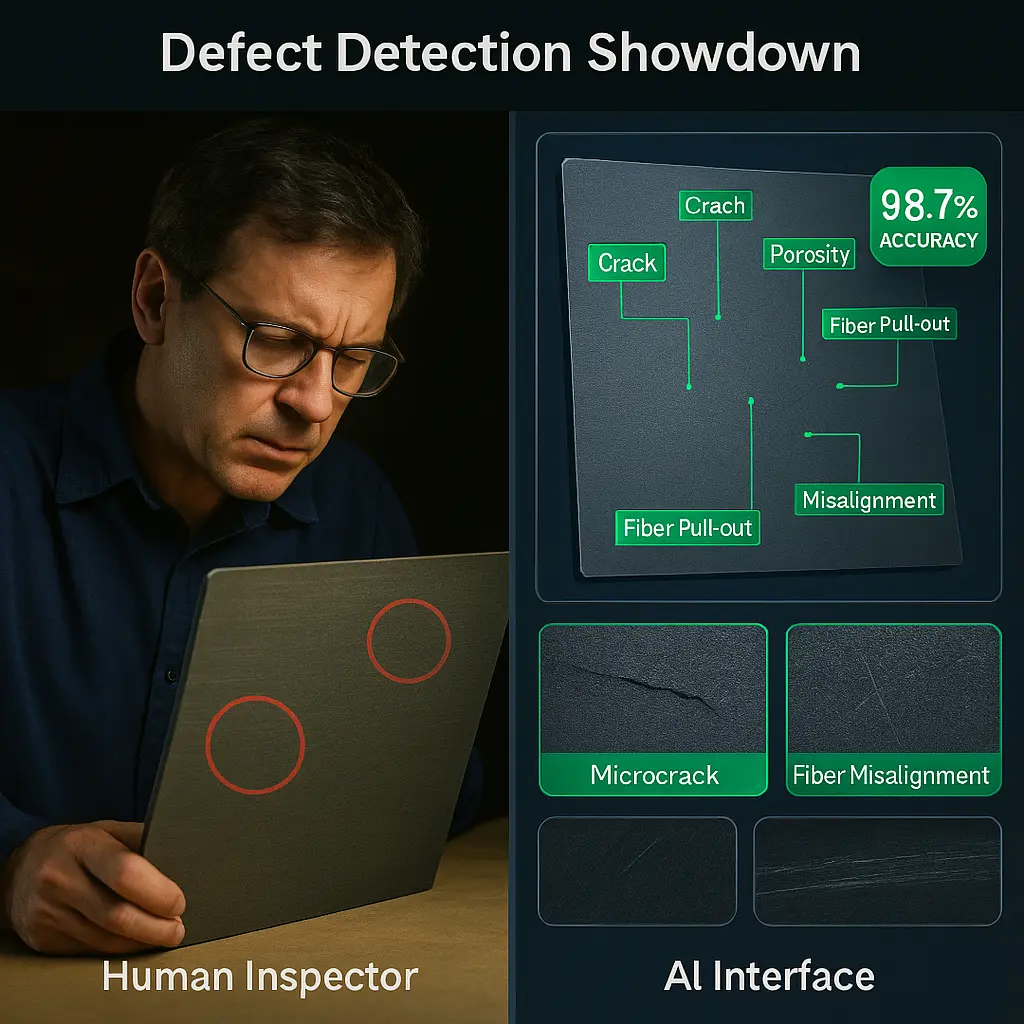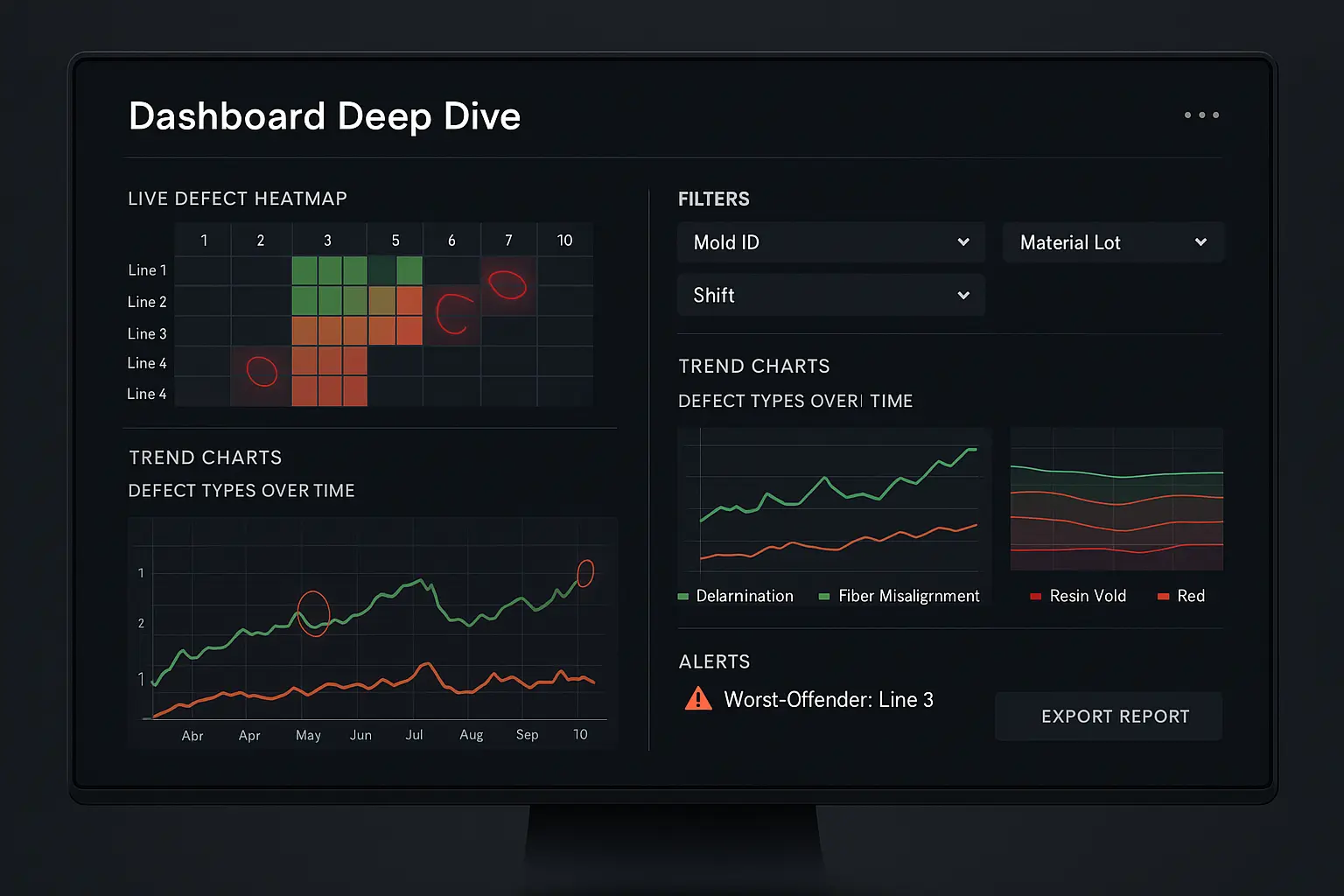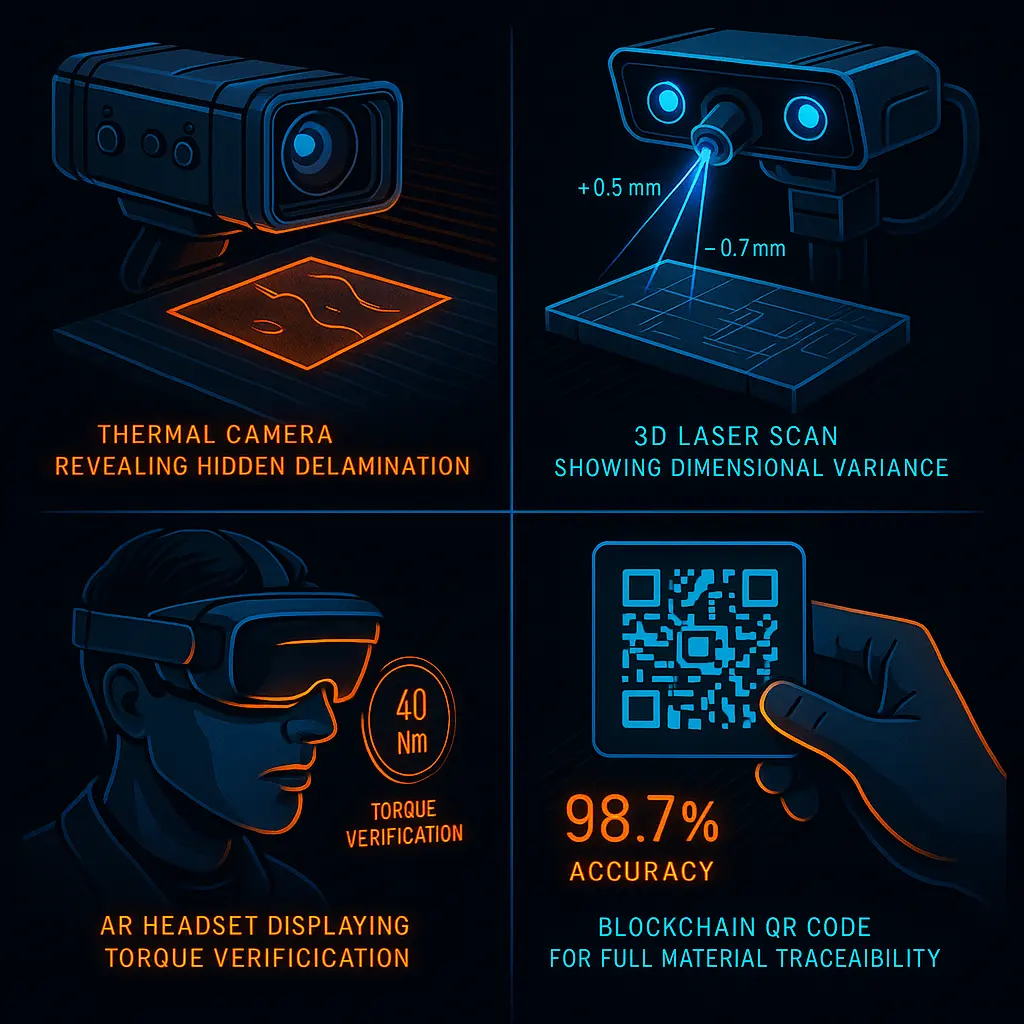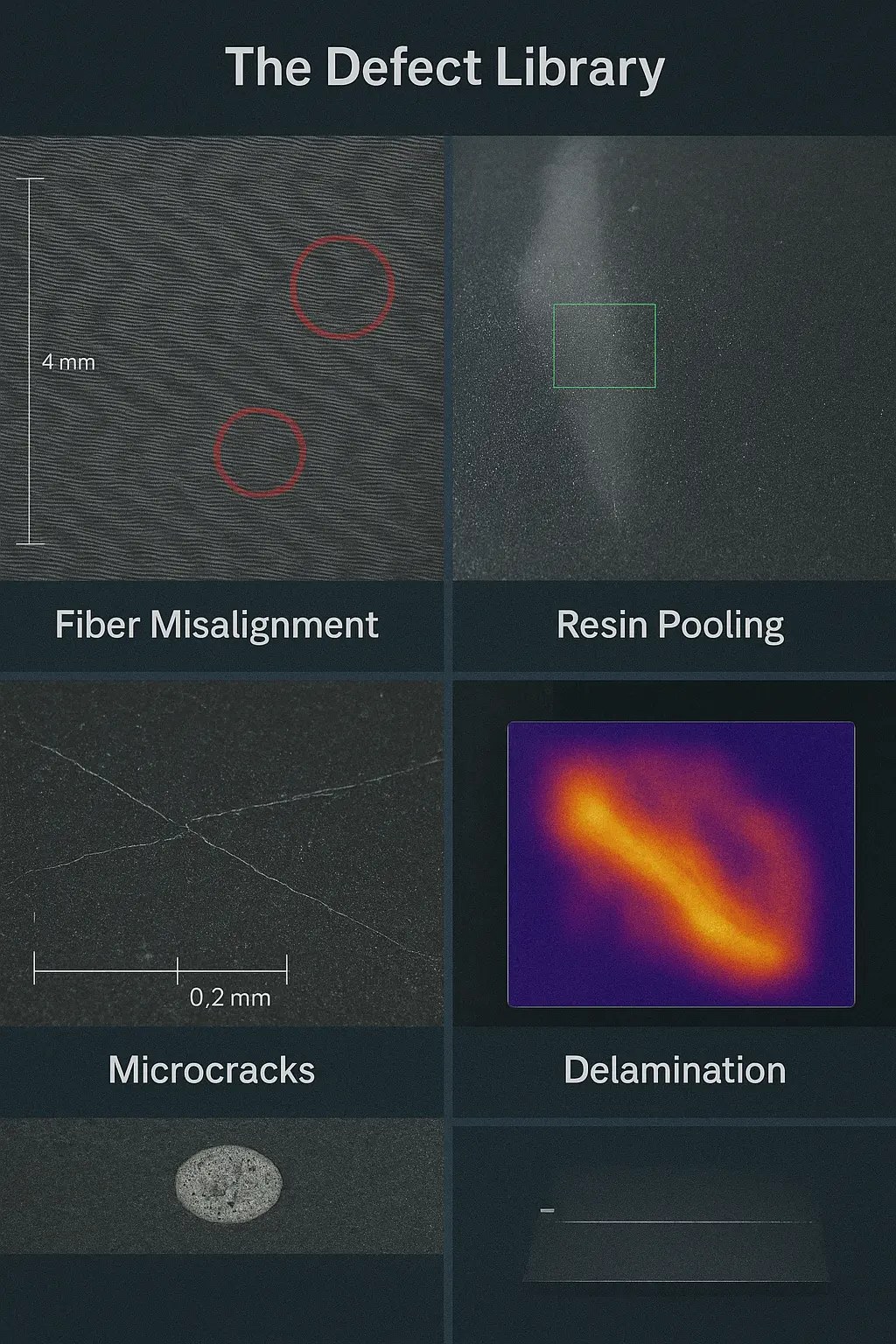Visual QA with AI in Composites
Executive Summary
A global manufacturer of high-performance composite structures engaged Synaptron to implement an AI-based visual inspection solution to enhance the dimensional and surface quality control of precision composite parts. Manual inspection techniques were proving inadequate for maintaining defect-free output at scale. Synaptron deployed a custom Computer Vision AI Capsule, resulting in:
- 7% critical defect detection accuracy
- 70% reduction in inspection cycle time
- Zero-defect dispatch compliance achieved within 4 months
- Significant reduction in warranty costs and rework
This implementation marked a shift from human-dependent inspection to a data-driven, AI-augmented quality system suited for aerospace and defense-grade manufacturing.
Challenge
Precision Manufacturing with Complex Defect Profiles
Subtle Defects Missed in Visual Inspection
Delaminations, fiber misalignment, micro surface cracks, resin pooling, and voids often went undetected during visual inspection, especially on matte carbon surfaces.
High Variability from Process and Operator Differences
Differences in mold release quality, curing conditions, and operator technique introduced inconsistencies across batches.
Manual QA Unable to Detect Hidden or Fine Flaws
Quality inspectors relied on visual cues and tap tests, often missing internal defects or surface flaws under low-angle lighting.
Time-Consuming Final Inspections Limiting Throughput
Final inspections took up to 6–8 minutes per part, limiting throughput.
Compliance Risks from Escapes and Customer Returns
Occasional escapes led to warranty claims from defense contractors and Tier-1 auto OEMs—where even a minor flaw could cause a program rejection.
Solution
AI-Based Computer Vision System for Composite Surface & Edge Inspection
Key Components:
- Dynamic Lighting + High-Res Camera Arrays
- Multi-angle LED lighting rigs minimized reflection and shadow artifacts on textured composite surfaces.
- Cameras captured 12MP images across defined inspection zones, focusing on edges, contours, and inner pockets of the components.
- AI Model Trained on Real Defects
- The Synaptron model was trained on an image library covering 15+ defect types including fiber misalignment, resin pooling, microcracks, foreign inclusion, and surface pitting.
- The AI learned to differentiate natural texture from process-induced irregularities using contextual features like pattern deviation and light scatter.
- Edge AI Inferencing + Instant Tagging
- Deployed on NVIDIA Jetson-based edge devices, the model processed each part inunder 3 seconds, flagging any anomalies with location and defect type.
- Integrated with in-line rejection logic to segregate non-conforming parts before final packing.
- Traceability Dashboard
- QA managers accessed a centralized console to review flagged defects with annotated imagery, correlate defect types with mold IDs, and track recurring issues by shift, operator, or material lot.

Outcome
Zero-Defect Culture Enabled by AI-Augmented Quality
Within 3 months of implementation, the client experienced a radical improvement in inspection accuracy and process control:
- 7% Detection Accuracyfor mission-critical surface and edge defects
- 70% Reduction in Inspection Timeper unit, freeing up human inspectors for root cause analysis and improvement activities
- Zero Non-Conformancesrecorded in outgoing shipments to aerospace and defense clients over 4 consecutive months
- 22% Reduction in Internal Rework, thanks to earlier defect catch and root-cause visibility
- Rapid Operator Adoptiondue to intuitive UI and image-based feedback
Future
Expanding Visual AI to Internal Defects and Assembly Validation
Thermal Imaging + AI
for identifying internal delamination and voids non-destructively
Automated Dimension Checking
via structured light and 3D scanning
Assembly Validation Capsules
to verify fitment, torque application, and rivet placements during sub-assembly
Integration with MES and QMS
to ensure full traceability from raw material to QA record, supporting customer audits and regulatory compliance


